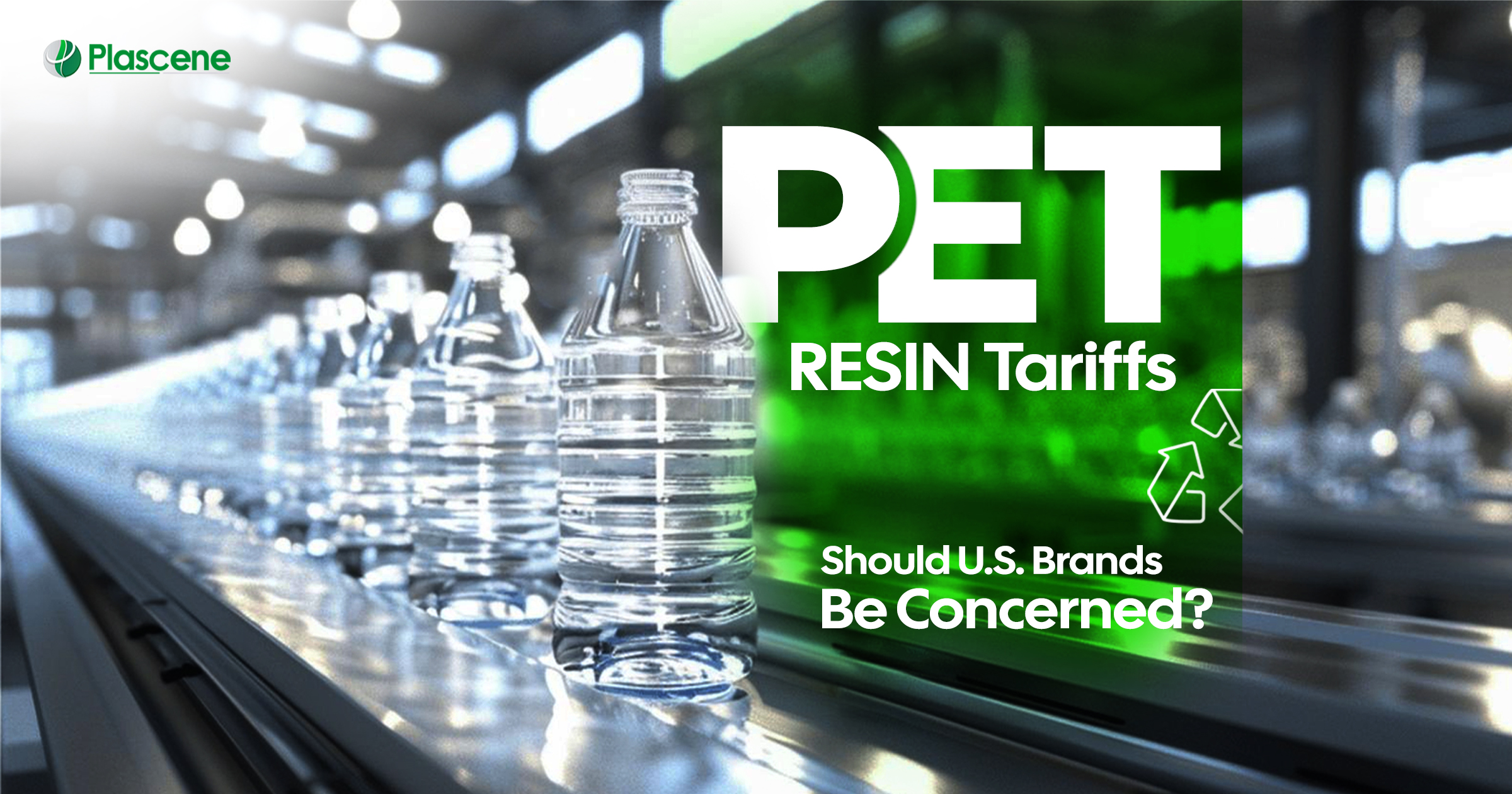Index
TogglePET Resin Tariffs 2025: How U.S. Brands Can Save 10–20% with Plascene
On September 5, 2025, the U.S. government extended reciprocal tariffs to include imported PET resin and recycled PET (rPET). For many American companies, the news raised immediate concerns: would this drive packaging costs up and put more pressure on grocery prices?
At Plascene, Inc., a leading supplier of PET bottles and jars for U.S. consumer brands, we want to put these changes into perspective. PET is the clear, durable, and recyclable plastic that powers most food and beverage packaging. Tariffs of around 20% on Vietnamese PET may sound significant, but the reality is that U.S. partners still enjoy clear cost advantages when sourcing from Plascene.

1. Imported PET from Vietnam Remains Cheaper
Industry data shows the gap is still in favor of imports. According to Argus Media (Aug 2025), virgin PET resin imported into the U.S. West Coast sells at around 50¢/lb, with large contracts as low as 40¢/lb. Meanwhile, ChemAnalyst reports North American PET prices averaging $1,117/MT (≈55-60¢/lb) in Q2 2025.
Even after a 20% tariff, Vietnamese PET would cost about 45-48¢/lb-still 10-20% lower than U.S.-produced resin. This cost gap explains why U.S. imports from Vietnam grew 61% in 2023 year-on-year (CZApp, 2024), making Vietnam one of the top suppliers to the American market.
2. Plascene Cushions the Impact for Stability
Plascene doesn’t simply pass on higher raw material costs. Thanks to long-term supplier relationships, economies of scale, and production efficiencies, we are able to absorb part of the tariff costs ourselves.
The numbers provide a cushion: with U.S. resin at 55-60¢/lb and Vietnamese imports after tariffs at 45-48¢/lb, there remains a 7-12¢/lb buffer. That margin allows Plascene to keep prices predictable and protect customers from disruptive swings.
For U.S. brands under pressure from inflation, stability is as valuable as savings. Our role is to make sure you have both.
3. Efficiency and Quality Lower Total Costs
Raw material is only one factor. The real measure is the total cost of ownership (TCO).
Plascene’s advanced production lines and strict quality control reduce waste, minimize product damage, and improve supply chain efficiency. Our lightweight bottle designs cut resin usage without sacrificing durability, while rPET content helps customers meet sustainability targets.
This means even if resin prices rise by a few cents per pound, the overall cost savings from efficiency and reliability outweigh those increases.
Data Snapshot
Imported PET vs. U.S. Domestic Resin (2025)
- Vietnam PET (after 20% tariff): ~45-48¢/lb
- U.S. Domestic PET: ~55-60¢/lb
- Advantage: 10-20% lower costs for importers
Sources: Argus Media (Aug 2025), ChemAnalyst (Q2 2025), CZApp (2024)

What It Means for U.S. Brands
While the goal of tariffs is to boost U.S. domestic PET production, structural cost differences remain. Higher labor, energy, and feedstock prices keep U.S. resin consistently more expensive. That’s why Vietnam, Taiwan, Mexico, and South Korea supply 85% of U.S. PET imports (CZApp, 2024).
For U.S. consumer brands, Plascene remains the smart choice:
-
Competitive → Still 10–20% cheaper than domestic resin, even after tariffs.
-
Stable → Part of the tariff cost absorbed by Plascene.
-
Efficient → High-quality PET & rPET packaging that reduces hidden costs.
Moving Forward with Confidence
Tariffs may dominate headlines, but they don’t change fundamentals. U.S. businesses can continue relying on Plascene for competitive, stable, and sustainable PET packaging solutions.
📩 info@plascene.com
☎ +1 888-848-6388

Plascene Shaping the Future at Natural Products Expo West 2026

Kicking Off 2026 in Style: Plascene to Exhibit at the Reimagined Winter FancyFaire in San Diego





